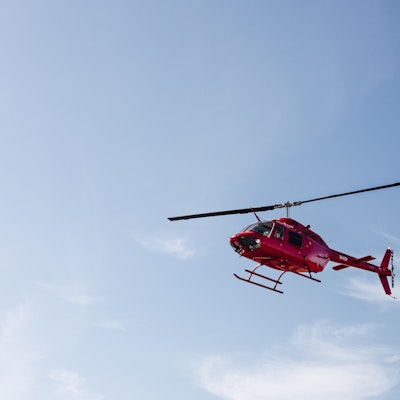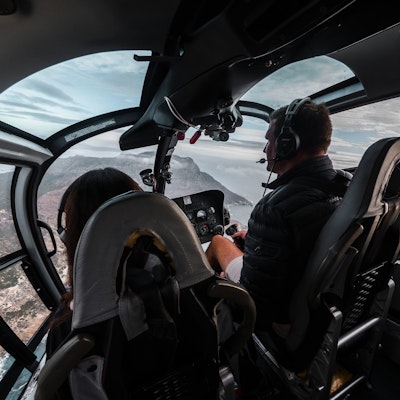1. What are the helicopter controls?
Some of the basic controls you’ll need to know:
- The collective is the lever mounted to the cabin floor to the left side of the pilot’s seat
- The throttle is the twistable grip at the end of the collective
- The cyclic is the “stick” located directly in front of the pilot’s seat
- The tail rotor is controlled by the two pedals on the floor also known as anti-torque pedals
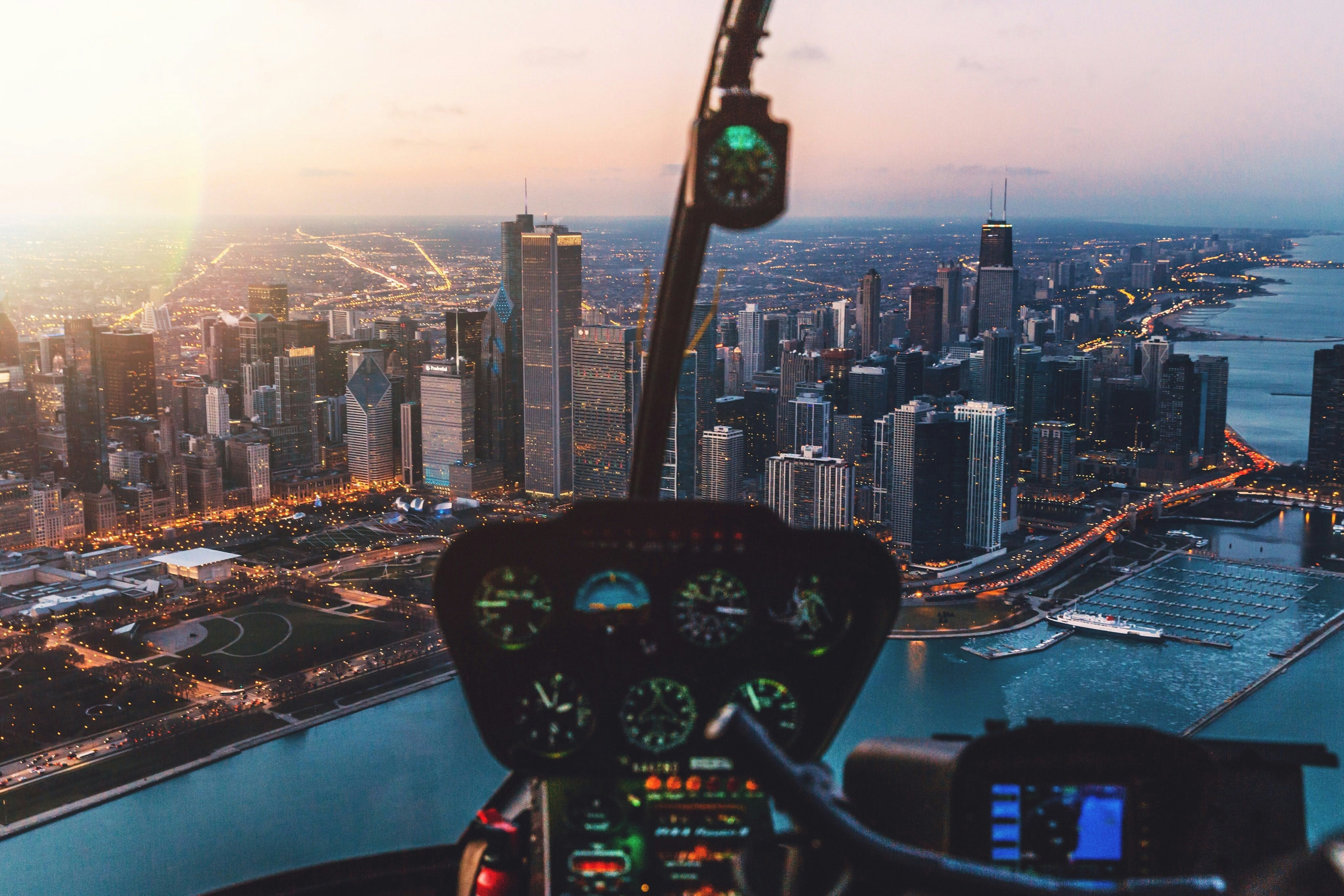
2. Taking off
Flying a helicopter can be great fun but requires great skill and dexterity.
To control a helicopter, a pilot must grip the cyclic in one hand and the collective in the other. At the same time, they feet must operate the foot pedals that control the tail rotor, which allows the helicopter to rotate in either direction on its horizontal axis.
The collective typically looks like a handbrake whose grip functions as the throttle. Twisting the grip controls the power output of the engine, increasing or decreasing the speed of the main rotor.
How to take off:
- First, the pilot opens the throttle completely to increase the speed of the rotor.
- Next, they pull up slowly on the collective. The collective control raises the entire swash plate assembly as a unit. This has the effect of changing the pitch of all rotor blades by the same amount simultaneously.
- As the pilot increases collective pitch, they depress the left foot pedal to counteract the torque produced by the main rotor.
- The pilot keeps pulling up slowly on the collective while depressing the left foot pedal.
- When the amount of lift being produced by the rotor exceeds the weight of the helicopter, the aircraft will get light on its skids and slowly leave the ground.
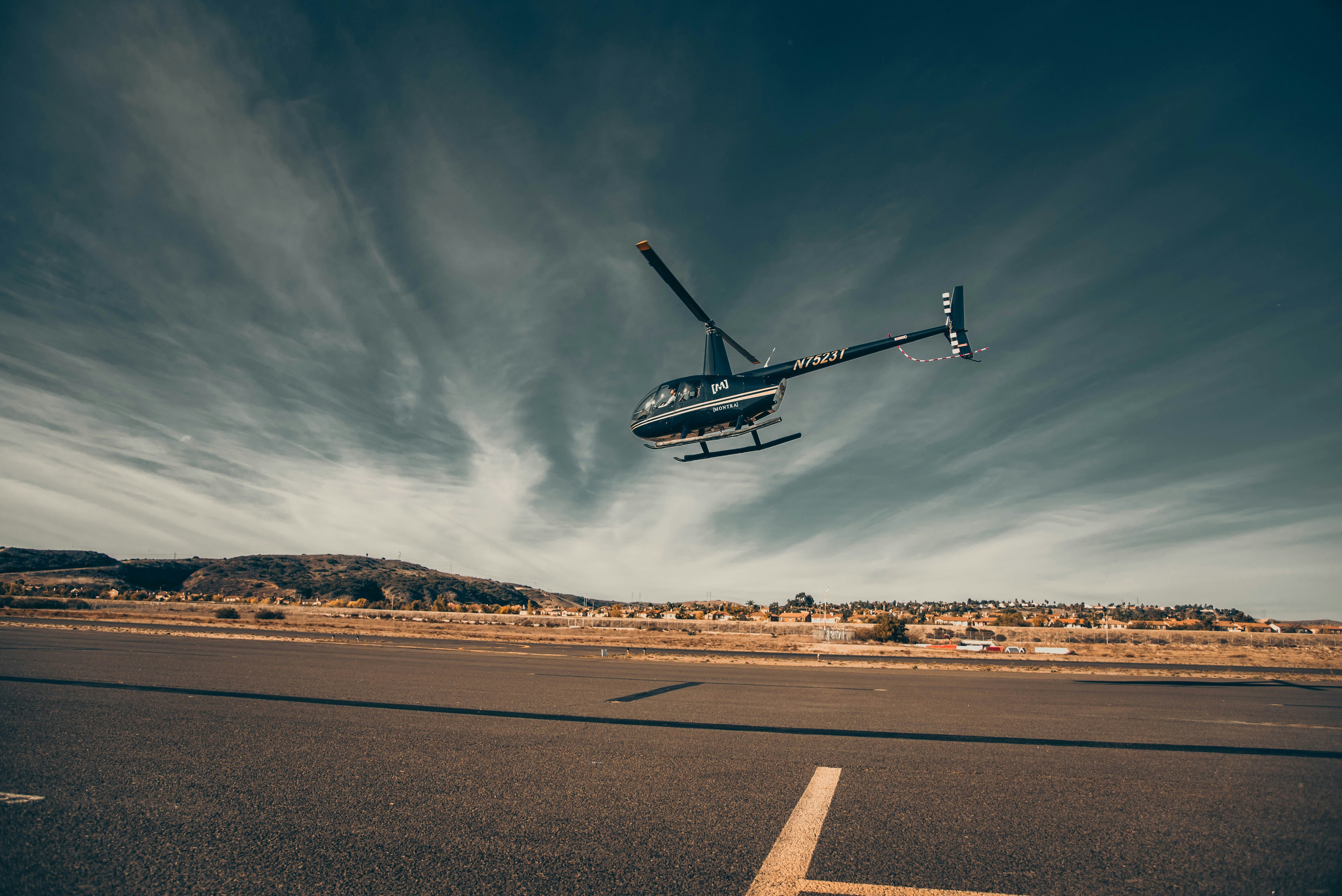
3. Directional Flight
As well as moving up and down, helicopters can fly forward, backward and sideways. This kind of directional flight is achieved by tilting the swash plate assembly with the cyclic, which alters the pitch of each blade as it rotates. As a result, every blade produces maximum lift at a particular point. The rotor still generates lift, but it also creates thrust in the direction that the swash plate assembly is tilted. This causes the helicopter to lean and fly in a certain direction. The pilot can impart additional directional control by depressing or easing up on the foot pedals, which increases or decreases the counteracting thrust of the tail rotor.
If you want to fly forward you must:
- Nudge the cyclic lever forward
- Ensure that input is transmitted to the lower swash plate and then to the upper swash plate.
- Ensure the swash plates tilt forward at an amount equal to the input.
- The rotor blades must be pitched lower in the front of the rotor assembly than behind it.
- This increases the angle of attack and creates lift at the back of the helicopter.
- The unbalanced lift causes the helicopter to tip forward and move in that direction.

4. Hovering
The defining characteristic of a helicopter is its ability to hover at any point during a flight. To achieve hovering, a pilot must maintain the aircraft in nearly motionless flight over a reference point at a constant altitude and on a heading (the direction that the front of the helicopter is pointing).
How to bring a helicopter into a hovering position:
- First, the pilot must cease any directional flying. For example, if flying the helicopter forward, the pilot must ease back on the cyclic until the helicopter's forward motion stops and the aircraft remains motionless over a point on the ground.
- Next, it's important that the pilot can detect small changes in the aircraft's altitude or attitude. They accomplish this by locating a fixed point outside the cockpit and tracking how the helicopter moves relative to that point.
- Finally, the pilot adjusts the collective to maintain a fixed altitude and adjusts the foot pedals to maintain the direction that the helicopter is pointing.
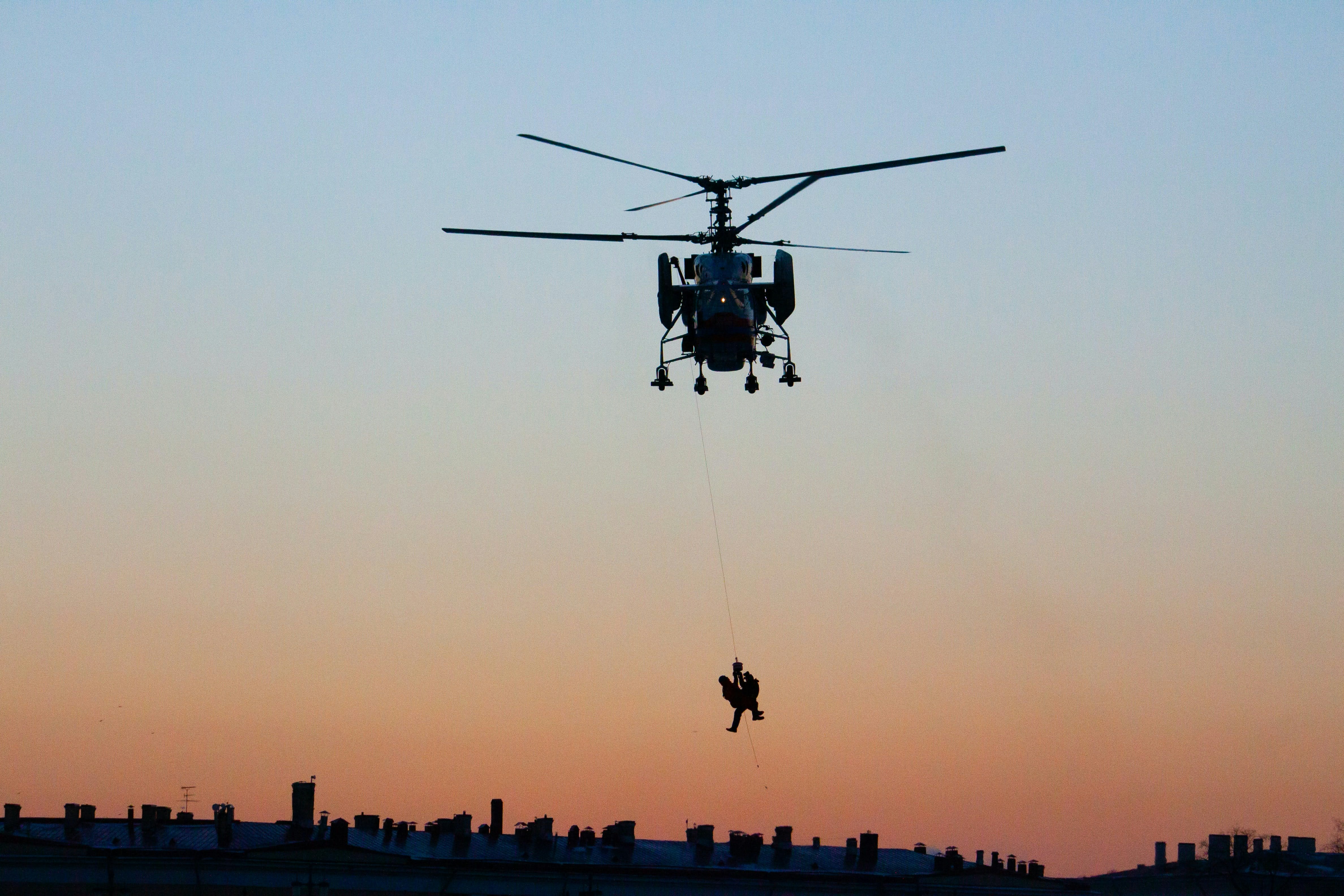
5. Landing
When landing you must make sure you always have your landing target in sight, normally slightly to your right (pilots side). This may mean that you have adjust your trim so you are turned slightly to one side as you approach.
- Try to be around 200–500 feet (61.0–152.4 m) above ground or any obstacles when you are 5 km from your landing area.
- Watch your airspeed. At around 2km from the landing area slow the aircraft to 40 knots and begin to descend. Check your descent rate. Be careful not to let your vertical speed go over 300 feet (91.4 m) per minute. Vertical speed can be adjusting by applying the necessary amount of collective.
- As you approach the edge of the landing area, gradually slow to 30, then 20 knots. You may need to bring the nose up to decrease airspeed. Doing so will momentarily obscure your sight of the landing area.
- Keep moving forward when you get to the landing area, since it's much harder to control drift and land on the target if you hover first. Once the spot you want to land appears to slide beneath the nose of the aircraft you can then reduce the collective.
- Arm the parking brake. Ease the cyclic back to reduce momentum and then forward to level the altitude. Keep rate of descent as low as possible — adjust the collective appropriately.
- Once you have made contact with the ground, check that your parking brake is armed and then reduce all power.
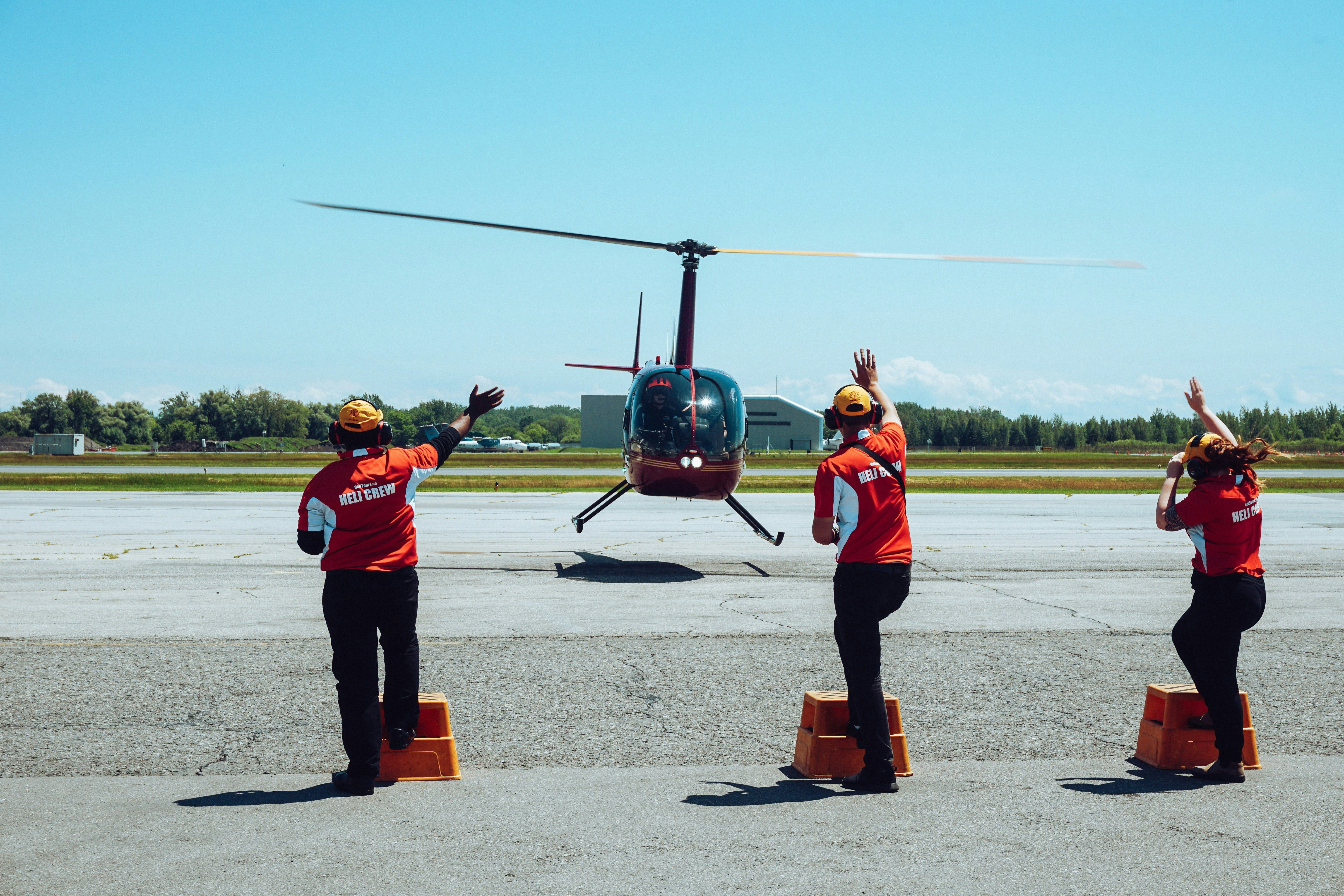
Summary
We hope this has given you an insight into how to fly a helicopter and what manoeuvres it entails. If you are wondering how you could become a helicopter pilot then check out our blog or if you’re just looking to experience a helicopter flight then check out our helicopter tours.


